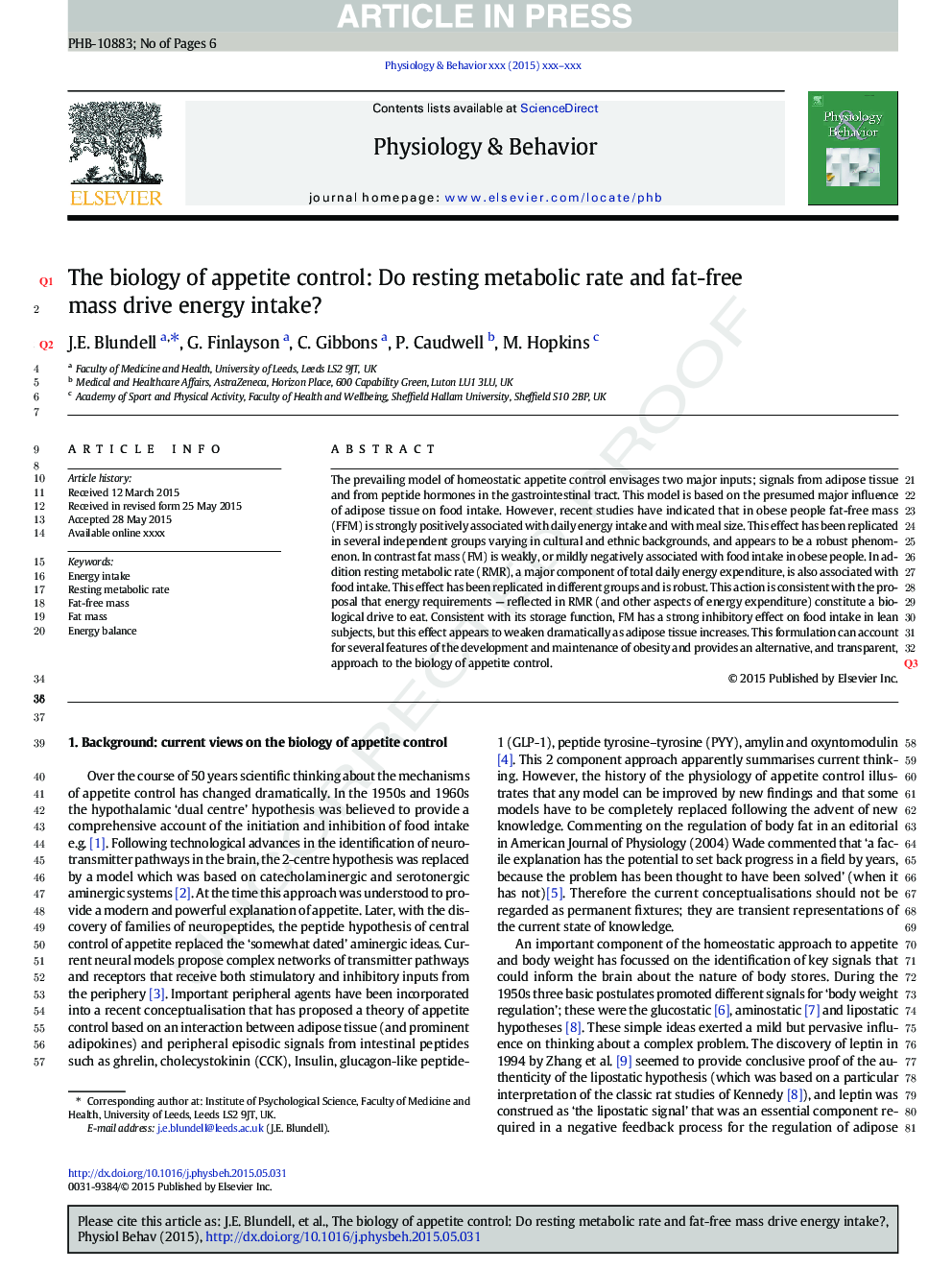| کد مقاله | کد نشریه | سال انتشار | مقاله انگلیسی | نسخه تمام متن |
|---|---|---|---|---|
| 5923204 | 1166294 | 2015 | 6 صفحه PDF | دانلود رایگان |
عنوان انگلیسی مقاله ISI
The biology of appetite control: Do resting metabolic rate and fat-free mass drive energy intake?
ترجمه فارسی عنوان
زیست شناسی کنترل اشتها: آیا میزان متابولیسم استراحت و مصرف انرژی بدون چربی در اختیار شما قرار می گیرد؟
دانلود مقاله + سفارش ترجمه
دانلود مقاله ISI انگلیسی
رایگان برای ایرانیان
کلمات کلیدی
مصرف انرژی، استراحت سرعت متابولیسم، جرم بدون چربی، توده چربی، تعادل انرژی،
موضوعات مرتبط
علوم زیستی و بیوفناوری
بیوشیمی، ژنتیک و زیست شناسی مولکولی
فیزیولوژی
چکیده انگلیسی
The prevailing model of homeostatic appetite control envisages two major inputs; signals from adipose tissue and from peptide hormones in the gastrointestinal tract. This model is based on the presumed major influence of adipose tissue on food intake. However, recent studies have indicated that in obese people fat-free mass (FFM) is strongly positively associated with daily energy intake and with meal size. This effect has been replicated in several independent groups varying in cultural and ethnic backgrounds, and appears to be a robust phenomenon. In contrast fat mass (FM) is weakly, or mildly negatively associated with food intake in obese people. In addition resting metabolic rate (RMR), a major component of total daily energy expenditure, is also associated with food intake. This effect has been replicated in different groups and is robust. This action is consistent with the proposal that energy requirements - reflected in RMR (and other aspects of energy expenditure) constitute a biological drive to eat. Consistent with its storage function, FM has a strong inhibitory effect on food intake in lean subjects, but this effect appears to weaken dramatically as adipose tissue increases. This formulation can account for several features of the development and maintenance of obesity and provides an alternative, and transparent, approach to the biology of appetite control.
ناشر
Database: Elsevier - ScienceDirect (ساینس دایرکت)
Journal: Physiology & Behavior - Volume 152, Part B, 1 December 2015, Pages 473-478
Journal: Physiology & Behavior - Volume 152, Part B, 1 December 2015, Pages 473-478
نویسندگان
J.E. Blundell, G. Finlayson, C. Gibbons, P. Caudwell, M. Hopkins,
